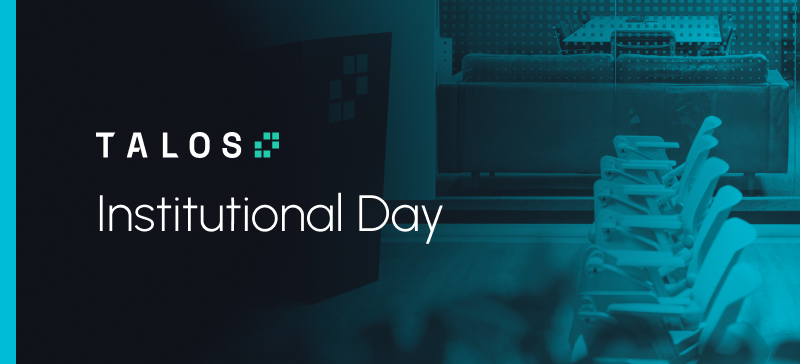Build vs. Buy: A Key Question for Institutions Entering Crypto
In the uniquely complex landscape of crypto trading, institutions must decide whether to build their own trading infrastructure or rely on specialized technology partners. We explore the intricacies of market fragmentation, liquidity and the technological challenges to achieving best execution. We conclude that partnering with a crypto-native technology provider offers the most agile and effective route for institutions.
Build vs. Buy: A Key Question for Institutions Entering Crypto
Introduction
In the uniquely complex landscape of crypto trading, institutions must decide whether to build their own trading infrastructure or rely on specialized technology partners. We explore the intricacies of market fragmentation, liquidity and the technological challenges to achieving best execution. We conclude that partnering with a crypto-native technology provider offers the most agile and effective route for institutions.
Crypto markets are uniquely complex
Liquidity challenges
Although crypto liquidity has been growing over time, crypto markets are not nearly as liquid as traditional markets such as equities, fixed income, commodities and currencies. Daily crypto exchange volumes in 2022 ranged from a low of $16.3 billion to a high of $48.2 billion, highlighting the market’s inherent volatility, and paling in comparison to the volumes traded in traditional markets.
Similar to foreign exchange (FX) markets, crypto liquidity is driven in large part by OTC brokers. While this activity is not as transparent as exchange volumes, due to the lack of formal and consistent reporting across OTC providers, we know that OTC brokers are significant contributors to crypto liquidity – particularly when an exchange goes down or during times of market distress.
24/7 trading and other idiosyncrasies
Unlike traditional markets, crypto markets never sleep. Crypto trading happens 24/7 necessitating always-on risk modeling and uninterrupted attention to the markets. Other idiosyncrasies include:
- Trading on crypto exchanges requires the pre-funding of assets
- There is the heavy use of request-for-quote (RFQ) for price discovery, given the importance of OTC liquidity, making it difficult to gain an aggregated view of market liquidity
- Exchanges, OTC brokers, and custodians tend to use proprietary APIs, making it difficult to manage multiple connections
- There is no single standard for connectivity with REST APls, WebSockets and FIX protocol all in use, adding to the technical challenge of aggregating liquidity.
Challenges to best execution
Market fragmentation
Traders have to deal with a bewildering array of centralized exchanges (CEXs) and decentralized exchanges (DEXs), each with its own characteristics, in addition to OTC liquidity providers. Moreover, new markets that combine central limit order books with some features of decentralized markets complicates the landscape. An understanding of market structure, therefore, becomes crucial for finding the best liquidity and generating returns.
Regulatory uncertainty
Greenwich research shows that buy-side firms expect the majority of trading volume to take place in either fully decentralized exchanges or non-regulated exchanges, making sourcing the best liquidity in the market a non-trivial matter and one that requires a view on legal entities, counterparty risk, reputational risk, and compliance with existing and future regulations.
Technological hurdle
Once an institution wishes to scale its trading beyond a single exchange liquidity book, understanding how to stream and normalize prices from multiple sources into a single readable and actionable format becomes a significant challenge. Moreover, Greenwich research observed a shift from RFQ in favor of streaming prices (RFS or “request for streaming”) from liquidity providers.
Are you equipped to navigate this fragmented and complex market for best execution?
Build vs. buy
Are you agile enough?
Setting up trading infrastructure in crypto is complicated. Building a solution demands an engaged engineering team with both market structure and technology expertise. With a rapidly changing landscape, including the advent of new types of exchanges, the team would have to quickly adapt the platform to integrate new liquidity models or risk becoming obsolete.
It’s not typical for investment-focused firms to have this specialized skillset in house, and it’s not expected that they will have an advantage in competing for such talent.
Most are not
Greenwich believes most institutions will struggle with the market structure and engineering expertise required to remain agile in this market, and will therefore choose partnerships with technology firms that can provide the necessary support. These partners would be expected to maintain their platforms over time across trading and other workflows.
In traditional markets, most institutions already partner with technology providers across different functions such as data, analytics, trade execution, custody, and post trade. Many firms also already rely on third-party trading systems (e.g., portfolio, order and execution management systems) which support trading in a variety of asset classes.
Where to look for trading technology
Traditional prime brokers are not there yet
Traditional prime brokerages, who would normally provide market structure expertise and execution support (e.g., market access, liquidity aggregation, smart order routing, algorithmic trading) are not doing so. A major reason that traditional prime brokers are not in the sector has to do with regulation and the issue of crypto on balance sheets (banks have onerous capital requirements for holding digital assets on balance sheets, based on guidance from the Bank of International Settlements) making it difficult for the banks to provide the full range of prime services.
As a result, investment firms entering the space should be prepared to learn about a new set of service providers, counterparties and exchanges that they are not used to dealing with.
The leading providers are crypto native
For the most part, Greenwich Associates observes crypto-native technology companies leading the way to support institutional traders. Most trading technology in the space comes from firms launched in the last 3-8 years, indicating the rapid innovation in the sector.
For now, crypto-native firms are providing the specialized expertise that traditional prime brokers currently can’t provide.
Conclusion
Given the idiosyncrasies of the crypto market, and the heterogeneity of market microstructures and connectivity protocols, success for an institutional trading firm will depend on its access to engineering and market structure expertise.
As the crypto market continues to grow in complexity, Greenwich believes that institutions are more likely to partner with specialized technology providers. Doing so not only mitigates risks, but ensures the agility necessary for success in the volatile crypto trading landscape over the long term.
1. Source: CryptoCompare
Disclaimer: Talos Trading, Inc. and its affiliates (“Talos”) offer software as a service (“SaaS”) products that provide connectivity tools for institutional clients. Talos does not provide clients with any pre-negotiated arrangements with liquidity providers or other parties. Clients are required to independently negotiate arrangements with liquidity providers and other parties bilaterally. Talos is not party to any of these arrangements. Services may not be available in all jurisdictions. For information about which services are available in your jurisdiction, please reach out to your sales representative. Talos is not is not an investment advisor or broker/dealer. This document and information do not constitute an offer to buy or sell, or a promotion or recommendation of, any digital asset, security, derivative, commodity, financial instrument or product or trading strategy. This document and information are not intended to constitute investment advice or a recommendation to make (or refrain from making) any kind of investment decision and may not be relied on as such. This document and information are subject to change without notice. It is provided only for general informational, illustrative, and/or marketing purposes, or in connection with exploratory conversations with institutional investors and is not intended for retail clients. The information provided was obtained from sources believed to be reliable at the time of preparation, however Talos makes no representation as to its accuracy, suitability, non-infringement of third-party rights, or otherwise. Talos disclaims all liability, expenses, or costs arising from or connected with the information provided.
Latest insights and research
Request a demo
Find out how Talos can simplify the way you interact with the digital asset markets.






